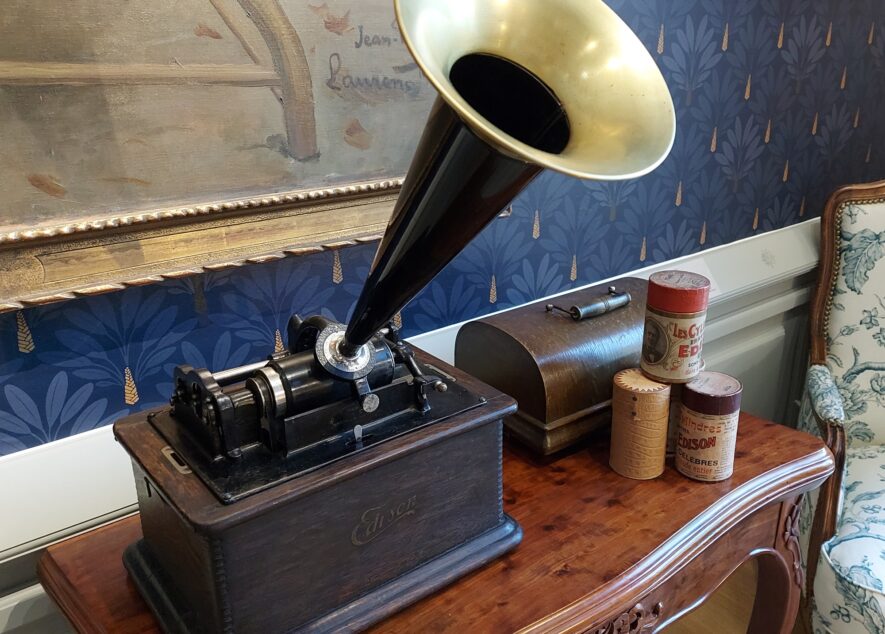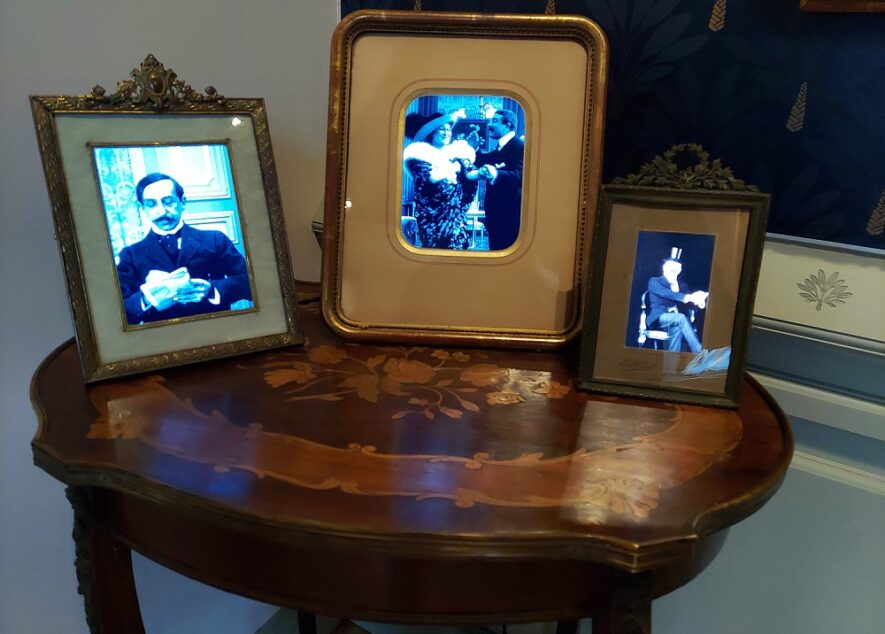
Thomas Edison (1847-1931)
Phonograph (cylindrical)
circa 1877
Phonograph
It was at the 1878 World's Fair that the public discovered Edison's phonograph. The operator spoke in a loud voice in front of a mouthpiece containing a membrane of the type used in Bell's telephone while rotating a cylinder with a crank. The vibrations of the blade, caused by the sound, animate a steel point which engraves grooves in the tin foil surrounding the cylinder. The voice, recorded, is amplified and played back through a megaphone placed on the mouthpiece.
It was mainly the musical field that gave this invention all its interest. Before the First World War, the "rolls", by allowing the diffusion of songs and short musical pieces, gained an enormous success.
